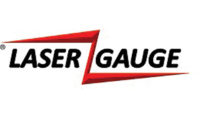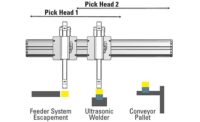Fasteners are some of the most important parts of an assembly as they hold the entire assembly together and facilitate the interaction between the individual components. Ideally, the selected fasteners are simple to assemble, provide a quality product for the intended lifetime of the assembly, and yield the overall lowest cost of the assembly taking into account the entire manufacturing process.
This article focuses on how to select the proper pin for an application. Specifically, press fit pins are discussed here because they are the most common types of pins used in modern manufacturing.
Press Fit Pin Types:
Among press fit pins, there are two general categories: Solid Pins and Spring Pins. Solid Pins can have a smooth, uninterrupted surface (such as dowels) or be designed with retention features such as knurls, grooves and barbs. All Solid Pins are retained by displacing the host material. Conversely, Spring Pins retain themselves by exerting a radial force (tension) against the hole wall after installation. There are two different types of Spring Pins: Slotted Pins and Coiled Pins. Slotted Spring Pins are general purpose, low cost pins typically recommended for non-critical assemblies. Oftentimes, Slotted Pins are used in applications where they are manually installed into mild to hardened steel components. Coiled Spring Pins are available in light, standard, and heavy duty to enable the designer to choose the optimum combination of strength, flexibility, and diameter suited for varying host materials and performance requirements.
Common Pin Functions:
While there are many different ways to use pins, the most common are shown in Table 1. These guidelines apply the majority of the time, but each specific application should be evaluated for final determination of which pin type is most appropriate.
Features, Advantages, Benefits:
Each type of press fit pin serves a purpose for manufacturers. Table 2 compares the common features, advantages, and benefits for each type of pin.
General Considerations for Pin Selection:
Spring Pins are typically preferred over Solid Pins because of their flexibility, lower insertion forces, and their ability to accommodate wider hole tolerances as compared to Solid Pins.
Here are several common exceptions where Solid Pins are preferred:
- When a head is required for a positive stop or to retain a thin member to a thicker member of the assembly.
- When a smooth, uninterrupted surface is required such as when used in conjunction with a pawl or other angular component.
- When a hollow pin is not suitable such as when the designer is looking to plug a hole (i.e. restrict passage of liquids).
- When there is a need to manually align several clearance holes.
- When increased bending or shear strength is required.
- When precise hole locations need to be maintained.
Conclusion: Coiled Spring Pins are undoubtedly superior when it comes to assemblies subject to dynamic loading. Coiled Spring Pins have a unique combination of strength and flexibility, which allows them to dampen forces and vibration to prevent hole damage and prolong assembly life.
Designers can optimize the performance and total manufactured cost of an assembly by selecting the proper pin for their application. In order to do this, it’s critical that fastener options are considered early in the design stages. The most important step in selecting the proper pin is to evaluate the application in detail and establish performance requirements. Finally, the design team should test and validate the fastener(s) in prototype assemblies before final approval is given.





